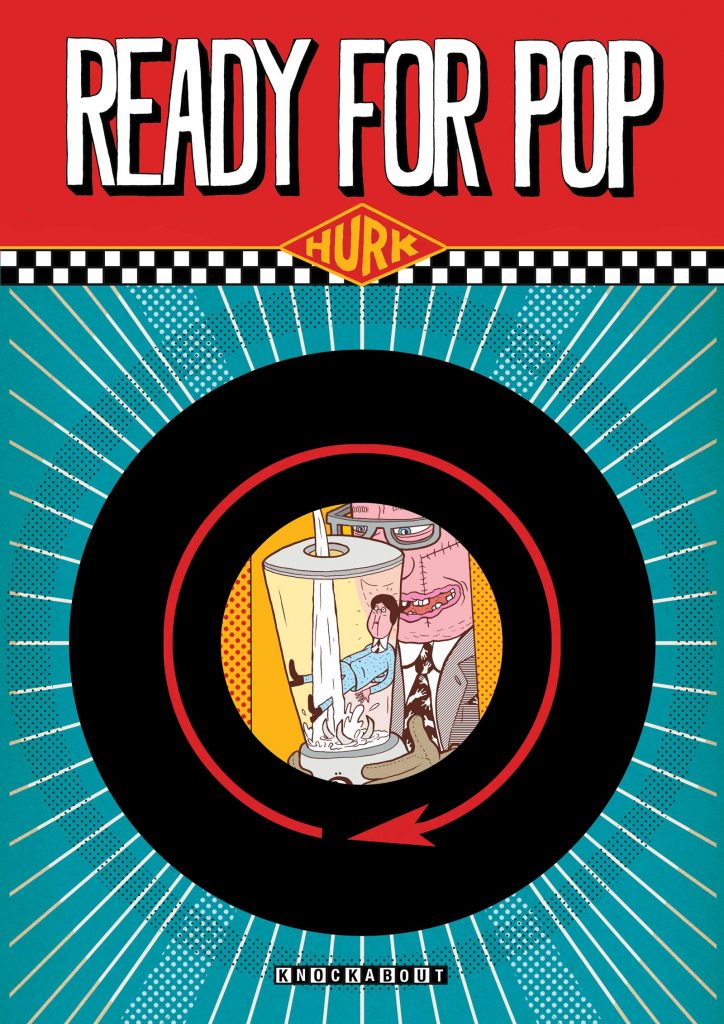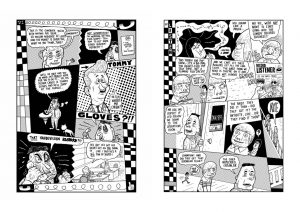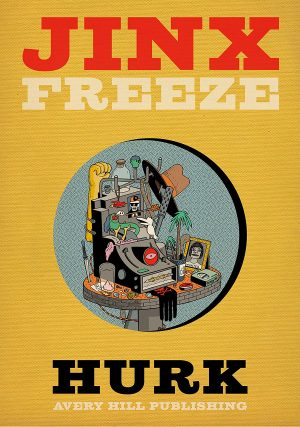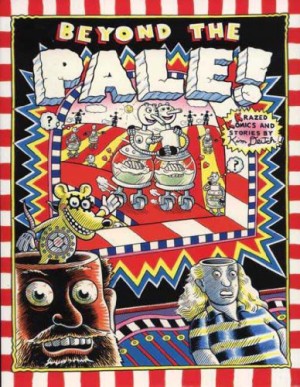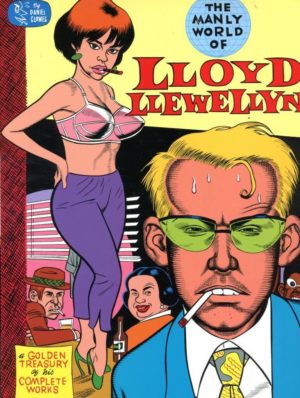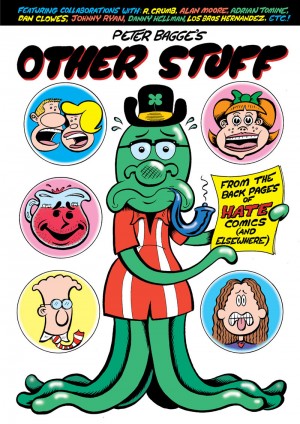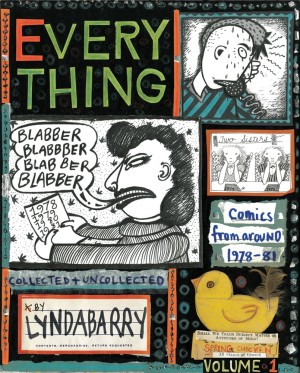Review by Graham Johnstone
Ready for Pop is the first book by self-styled ‘comicsmith’ Hurk, and a caper novel crossing the worlds of crime and pop music. It’s a love-letter to the 1960s, as experienced through the decade’s popular culture.
Indicating the tongue-in-cheek tone, it begins with “pop sensation” Vic Vox being shrunk to the size of a doll (pictured, right), to thwart his next step to stardom: headlining the ‘Ready for Pop’ live TV special. Thereafter, the action is driven by jaded copper Chief Inspector Ladyshoe, attempting to find out who shrank Vic, and restore him to full size in time for the gig. Suspects include rival band The Small Pocks, crook turned Billiard hall supremo, Frankie Valet (sic), and the Lucky Boot Cigarette Co. Each name attests to the offbeat humour. Constable Pepys, for example, exists only to be told to put something “in his diary”. As the officer’s laconic response to this shows, the humour is also smart enough to mock its own cornier moments. A reductive take would pigeonhole Ready for Pop as parodic nostalgia, but as with, say, Netflix’ 80s pastiche Stranger Things, the book is so intricately and lovingly realised as to transcend parody and become a satisfying original work.
Woven through the detection plot are a series of entertaining subplots. These encompass cops and criminals cosying-up in secret society The Brotherhood of the Anvil, and the also compromised loyalties of Vic’s driver. The best, though, involves the washed-up Tubs Cochran grudgingly compèring the Ready for Pop event, to spite his rival Tommy Gloves (pictured, left).
Ready for Pop is more romp than realism, more style than satire, but there’s still sharp social comment. This encompasses music industry payola; the encroachment of America (Lucky Boot cigarettes); Police harassment (of Valet’s now-legitimate business); and conversely, Police colluding with criminal cronies in ‘the brotherhood’ – the latter still a live issue today. For a 120 page graphic novel, it’s an elaborate construction – comically so. However, there’s tragedy amongst it, notably embodied in the hubristic Cochran. All the main characters and plot strands converge at the recording of the show, creating an extended finale that’s as thrilling as it is funny.
Hurk’s cover bio cheekily boasts a lack of artistic technique, though it’s mostly wrong in the right ways: channelling the modernist distortions of 1950s/60s cartoons, as re-appropriated by, say, Clowes and Kaz. Hurk emphasises character expression and compositional fun over illusionistic realism and (his supposed nemesis) perspective. Visual highlights include Ladyshoe’s increasingly grizzled and battered face, teenyboppers in the throes of Vic-mania, and the well-observed Pop Art/Op Art title sequence for the eponymous TV show. Hurk’s page designs are inventive, shunning the (literally, and in the hipster jibe sense) ‘square’ grid and gutters, in favour of the most angular pages since Gene Colan’s ‘far out’ layouts on the 1960s Dr Strange. Hurk’s offerings look stylish, but lacking Colan’s decades honed craft, they can be an awkward, even frustrating read. The approach may have been better used selectively. The opening sequence setting up the plot to shrink Vic, is the most extreme example of pages difficult to follow, however, Hurk gets more assured as the book progresses (featured pages). The rendering is also (sticking with pop terminology) hit and miss, with some artfully sweeping lines capturing expressive faces, undermined by fussy hatching elsewhere. Stylish scene-setting splash pages are amongst the hits.
Overall, Ready for Pop is an entertaining and stylish read. Hurk’s online presence showcases some impressive newer art, and it’s to be hoped more will make its way into book form.
